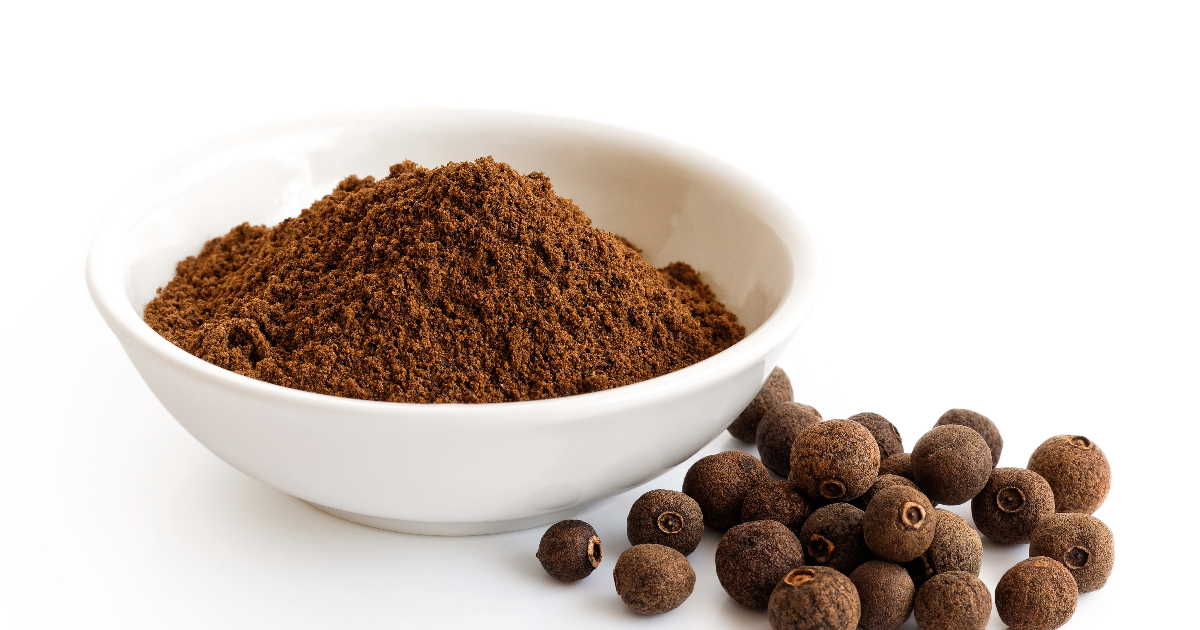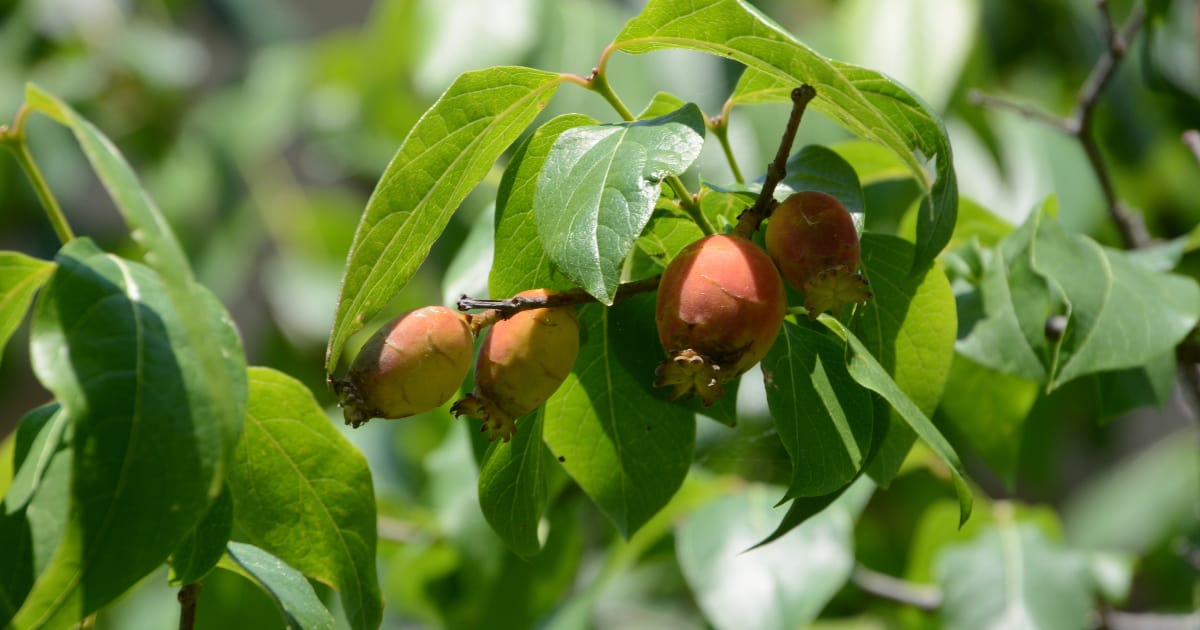Allspice is a versatile and aromatic spice that comes from the dried berries of the Pimenta dioica tree. It gets its name from its flavor profile which tastes like a combination of spices including cinnamon, clove, and nutmeg.

Allspice is available in both powdered and whole berry form. Many cooks wonder when it's better to use ground allspice versus whole allspice berries. Here is a thorough comparison of powdered and whole allspice to help you understand the differences, pros and cons, and best uses for each form.
How Allspice Powder and Berries Are Made

Allspice comes from the fruit of a tropical evergreen tree native to Central America and the Caribbean islands. The fruit is green berry-like drupes similar in appearance to small unripe olives.
To produce allspice powder, the unripe green berries are picked and then dried in the sun. The dried berries turn reddish-brown. Once fully dried, the whole berries are ground into a powder.
Allspice berries are simply dried whole fruits. They resemble large brown peppercorns.
Flavor Profile
The flavor and aroma of allspice powder and whole berries is quite similar. Both forms give a warm, sweet, and slightly peppery spice flavor.
When smelled, allspice recalls scents of cinnamon, clove, and nutmeg. The taste also brings to mind those spices, along with hints of pepper and pine.
Some key flavor notes of allspice powder and berries:
- Sweet - Allspice has a sweet, almost brown sugar-like taste. This sweetness rounds out savory dishes and desserts.
- Warm - The warming flavor comes from compounds like eugenol that provide a subtle heat. This warmth enhances savory foods.
- Woodsy - Subtle woody, almost piney notes come through. This can enhance meat and vegetable dishes.
- Peppery - There is a mild peppery kick, though allspice is not nearly as hot as black peppercorns.
Ground allspice tends to be slightly more bitter, while whole allspice berries are more mellow. Otherwise, the flavor is quite similar between the two.
Key Takeaway: Both whole and ground allspice deliver a warm, sweet flavor redolent of cinnamon, clove, nutmeg and black pepper. The flavor profile is nearly identical.
Aroma
The aroma of allspice is part of its allure. Both whole berries and ground powder give off a lovely, spicy fragrance when used in cooking.
Allspice powder releases its essential oils quickly when heated, allowing the cinnamon/clove/nutmeg aroma to perfume dishes.
Whole allspice berries take longer to release their aroma. However, the aroma also lingers longer when slowly infused with the whole spice.
So while powder provides an immediate burst of fragrance, the whole berries give a more gradual infusion of aroma that persists throughout cooking.
Uses in Cooking
How you plan to use allspice in cooking can determine whether the powder or whole berry form is better. Here are some general guidelines:
- Allspice powder - Best used in recipes where the allspice will be thoroughly cooked or baked. Examples are marinades, rubs, stews, chilies, curries, soups, cakes, breads, and cookies.
- Allspice berries - Best for slow-simmering in liquids to infuse flavor like stocks, braises, poaching liquids, and mulled wines. Also used in pickled and brined recipes.
Allspice powder blends well and easily releases flavor, so it's perfect in dry rubs, spice mixes, batters, doughs, etc. But it loses potency quickly after being ground.
Whole berries have a longer shelf life and infuse dishes more gradually with allspice flavor. But they require simmering or soaking to release their essence.
Here are some examples of popular uses for each form:
Allspice Powder Uses:
- Pumpkin pie spice blends
- Gingerbread, shortbread, sugar cookies
- Spice cakes, carrot cake, zucchini bread
- Pumpkin bread, banana bread, apple pie
- Jerk chicken, Jamaican jerk seasoning
- Mole sauce, taco seasoning, chili powder
- Pot roast seasoning, meat rubs
- Curries and masalas
- Vegetable side dishes like roasted carrots
Allspice Berries Uses:
- Pot roasts, beef stew, braises
- Soups, stocks, poaching liquid
- Mulled cider, mulled wine, wassail
- Pickled vegetables, pickles, relishes
- Fruit preserves like pear or peach jam
- Poached fruit like pears or apples
- Marinades for meat and poultry
So in summary, use powdered allspice when you need the spice to flavor a dish or blend into a mixture. Use whole berries when you want gradual infusion into soups, braises, and wet dishes.
Key Takeaway: Ground allspice is best for recipes needing uniform blending of spice. Whole berries are ideal for slow-simmering dishes and liquids needing allspice infusion.
Shelf Life and Storage
A key difference between allspice forms is their shelf stability.
Allspice powder loses potency fairly quickly once ground from the whole spice berries. Its flavor and aroma start fading within 3-4 months.
On the other hand, whole allspice berries retain their essential oils and aromatic compounds much longer. The berries can be stored properly for 2-3 years.
To get the most shelf life out of each:
- Allspice powder - Store in a cool, dark place in an airtight container. Try to use it within 3-4 months.
- Allspice berries - Keep them in an airtight container in a cool cupboard away from light. Will last 2-3 years.
You can also refrigerate or freeze either form to prolong freshness. Just keep moisture out.
Key Takeaway: Ground allspice loses potency within months, while whole berries keep for years stored properly. Buy small amounts of powder at a time and grind berries as needed.
Cost Comparison
Buying whole berries and grinding small batches as needed is ideal for the best flavor. But powder is more convenient for recipes needing measured amounts. Just buy powder in smaller quantities and try using it within a few months.
Allspice berries tend to cost a bit more per ounce compared to pre-ground allspice powder. However, given the longer shelf life and higher quality, the whole berries are cost-effective if used within their 2-3 year prime period.
Ground allspice can seem like the cheaper option. But having to replace it more often due to fading freshness can make it less economical overall.
Consider buying a batch of whole berries and keeping them to grind as needed for the next year or two. Occasionally supplement with smaller amounts of ground powder for convenience.
Flavor Intensity
Allspice powder provides a more concentrated and intense flavor initially since all the volatile oils are immediately released when heated. This gives a quick punch of allspice taste.
However, the flavor tends to dissipate faster as those essential oils evaporate. Within 30 minutes of cooking, much of the potency is lost.
Whole allspice berries release their flavor slowly over time. So the flavor is more subtle at first. But it builds in intensity and holds steady throughout extended cooking times.
So for a dish needing just a little allspice accent, the powder blended in provides a quick hit. For recipes cooked over an hour or more, the whole berries give a persistent depth of flavor.
Appearance
Whole allspice berries add visual interest and texture to dishes by providing little bursts of brown. The berries look attractive floating in soups, stews, and poaching liquids.
However, the hard berries are not safe to eat whole and must be strained out or avoided when eating. Still, they deliver visual appeal while infusing the surrounding dish.
Allspice powder simply blends in unseen, only imparting flavor and aroma. So the powder is preferable when appearance is not a concern.
Ease of Use
Allspice powder offers convenience, as you can simply shake it out of the bottle or measure the needed amount. No grinding is required. The fine powder also incorporated seamlessly into rubs, batter, doughs, etc.
However, pre-ground spice starts losing its volatile oils immediately. So the powders have a much shorter viable shelf life compared to the whole spice.
Allspice berries must be freshly ground before use. This takes a little extra time and effort. But you are rewarded with much fresher, more flavorful spice.
Overall, powder offers more convenience while whole berries deliver more flavor. Depending on your needs, choose accordingly or use a combination of the two.
Allspice Powder vs. Berries: Quick Comparison
| Allspice Powder | Allspice Berries |
|---|---|
| Provides concentrated flavor immediately | Releases flavor gradually over time |
| Adds aroma quickly when heated | Infuses dishes slowly with lingering aroma |
| Blends seamlessly into mixes and batters | Must be strained out after infusing |
| Loses potency within months | Keeps potent for 2-3 years |
| Provides convenience | Requires grinding before use |
| Ideal for baking and rubs | Great for braises, soups, brines |
FAQ
Can you substitute allspice powder for whole berries?
Yes, you can substitute powder for whole berries in most recipes. However, the flavor will come on faster and may not have the same depth and persistence. Add the powder at the end of cooking.
What's the conversion for powder to berries?
As a guideline, use about 1/2 to 1 teaspoon of powder for every 6-8 whole berries. Start with less powder and adjust to taste.
Is allspice powder or berries healthier?
Both forms provide the same health benefits. Whole berries retain their essential oils longer, but powder provides the same nutrients when fresh.
Can you use mace instead of allspice?
Mace has a similar flavor, but it's missing the peppery notes. Use mace along with a pinch of black pepper as a substitute if out of allspice.
What spices make a good allspice substitute?
A blend of cinnamon, nutmeg, cloves, and black pepper in equal parts approximates allspice fairly well. Adjust amounts to taste.
Conclusion
Allspice powder and whole berries each have their advantages. Allspice powder gives an immediate punch of flavor but fades fast. Whole berries slowly build in flavor intensity and aroma.
For most recipes, you can use either form with slight adjustments to quantity and timing. But overall, whole berries tend to provide the best flavor and scent.
Consider keeping whole allspice berries on hand to grind fresh for dishes cooked over 30 minutes or more. Supplement with smaller amounts of powder for baking or when you need ground spice convenience.
Combining both freshly ground powder and whole berries gives you the versatility to incorporate this warm, woodsy spice into an array of worldwide cuisines. Allspice brings its signature flavor and enticing fragrance to both sweet and savory dishes.

